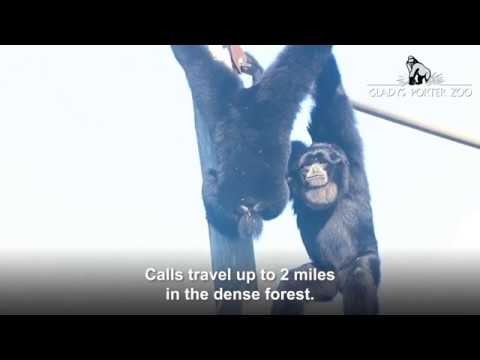- The biological characteristics and behavior of the Siamang, focusing on their adaptations and social structure.
- The role of the Siamang in their natural habitats and their interactions within their ecosystems.
- Current conservation efforts aimed at protecting and preserving Siamang populations.
- Challenges faced in zoo management and captive breeding programs for Siamangs.
- The significance of citizen awareness and involvement in conservation efforts for Siamangs.
The Siamang, a dark-furred arboreal gibbon, stands out both in terms of size and its unmistakable deep calls echoing across the forests of Sumatra and the Malay Peninsula. This primate, known for its striking vocalizations, challenges the noise of its habitat with a resonant duet performed by male and female pairs. The Siamang holds certain distinctions from other gibbons, primarily due to its larger size and the distinct throat sac used to amplify their calls. Slight morphological variations set them apart, such as their webbing between the second and third digits on each foot. This webbing plays a part in their graceful brachiation, a movement achieved as they swing limb to limb in their dense forest homes.
The Siamang’s social system is grounded in close-knit familial bonds. These primates often establish strong monogamous pair bonds, sharing lifelong companionships with their mates. In their usually small groups, Siamangs demonstrate considerable care and involvement in their offspring’s upbringing, creating an intricate family dynamic rarely broken by outsiders. Observations indicate that the young often stay within the group until they are mature enough to form their own partnerships. It is this familial structure that buttresses their survival, ensuring knowledge and skills are transferred across generations.
In their natural habitat, Siamangs occupy a critical niche within the ecosystem. As folivores and frugivores, their diet primarily consists of leaves and fruits, positioning them as both consumers and dispersers. Their feeding habits contribute significantly to the ecosystems they inhabit, aiding in seed dispersal and contributing to forest regeneration. The movements and feeding rhythms of the Siamang have ripple effects through the forest, affecting availability and competition with other fauna for resources. Their vocalizations, aside from serving territorial and communication purposes, help shape the acoustic landscape of the forest biome.
Despite the ecological role they play, Siamangs face significant conservation pressures. Deforestation driven by agricultural expansion, logging, and human encroachment into forested lands has led to diminishing habitats. In places where forests have been cleared, Siamangs are increasingly isolated in their remaining pockets of habitat, leading to genetic bottlenecks and reduced population viability. Conservation programs focus on habitat restoration and anti-poaching initiatives as crucial aspects of their strategies to protect this gibbon. International organizations and governments have recognized their plight, categorizing them as Endangered on the IUCN Red List, which drives conservation priority and funding.
Parallel to habitat-centered conservation, breeding Siamangs in zoos forms part of their global preservation strategy. Zoo management requires in-depth understanding and replication of their natural environment, revealing complex challenges in fostering successful breeding programs. Siamangs need adequate space and environmental enrichment to express natural behaviors, which can be demanding to reproduce. Furthermore, ensuring genetic diversity within captive populations mandates elaborate breeding frameworks. While zoos serve as genetic reservoirs that can repopulate diminished wild populations, they also confront ethical questions about primate welfare and natural behavior alteration.
The quest to conserve Siamangs is incomplete without public engagement. Public awareness campaigns, often led by zoos and conservation NGOs, aim to foster stewardship in local and international spheres. Engaging local communities near Siamang habitats holds potential in reducing poaching and habitat destruction through education and economic alternatives. Internationally, generating empathy and support can translate into policy advocacy and funding for conservation projects. Stories of Siamangs, conveyed through documentaries and media, underscore the shared responsibility toward biodiversity preservation.
The Siamang offers a salient example of the interconnectedness of wildlife health, human activity, and conservation. Their story highlights the importance of ecological balance and the immediate need for sustainable actions to protect not just a single species, but the rich tapestry of life within their ecosystems. Gaining an understanding of Siamang behavior, ecosystem roles, and conservation needs enriches our collective efforts to conserve the vibrant and diverse environments in which they thrive.
*****
Source Description
April is Ape Awareness Month! Meet Taylor and Raya, our resident siamangs.


